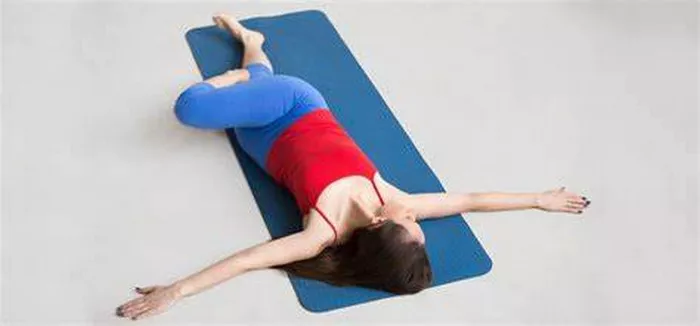Yoga is renowned for its myriad benefits, from improving flexibility and strength to promoting relaxation and stress relief. However, for individuals who have undergone anterior hip replacement surgery, certain yoga poses may pose risks and should be approached with caution. Anterior hip replacement, a surgical procedure where the damaged hip joint is replaced with an artificial one through a small incision in the front of the hip, requires careful consideration when engaging in physical activities like yoga. While yoga can be incredibly beneficial for rehabilitation and overall well-being after hip replacement, it’s crucial to be mindful of which poses to avoid to prevent complications and ensure a smooth recovery.
Understanding Anterior Hip Replacement Surgery
Before delving into the yoga poses to avoid, it’s essential to understand the intricacies of anterior hip replacement surgery. Unlike traditional hip replacement techniques that involve accessing the hip joint from the side or back, the anterior approach involves making an incision at the front of the hip. This approach allows for less disruption of muscles and tendons, potentially leading to faster recovery times and fewer post-operative restrictions. However, despite these advantages, it’s important to recognize that the hip joint is still healing and susceptible to stress and strain in the initial phases of recovery.
Precautions for Practicing Yoga After Anterior Hip Replacement
While yoga can offer numerous benefits for individuals recovering from hip replacement surgery, it’s imperative to exercise caution and follow specific guidelines to avoid complications. Here are some general precautions to consider before engaging in yoga practice:
Consultation with Healthcare Provider: Before starting any yoga practice post-surgery, it’s crucial to consult with your healthcare provider or orthopedic surgeon. They can provide personalized recommendations based on your unique condition and the specifics of your surgery.
Gradual Progression: Start slowly and gradually increase the intensity and duration of your yoga practice. Listen to your body and avoid pushing yourself too hard, especially in the initial stages of recovery.
Avoid High-Impact Poses: Steer clear of poses that involve sudden or forceful movements, as these can place excessive stress on the hip joint and surrounding muscles.
Use Props for Support: Utilize yoga props such as blocks, straps, and bolsters to provide support and stability during poses, particularly if you’re experiencing any discomfort or limitations in range of motion.
Mindful Breathing: Incorporate mindful breathing techniques into your practice to promote relaxation and reduce tension in the body. Focus on deep, diaphragmatic breathing to enhance oxygenation and circulation.
Yoga Poses to Avoid After Anterior Hip Replacement
While yoga offers a wide range of poses that can be adapted to accommodate individuals with hip replacements, there are certain poses that may be contraindicated or require modifications. Here are some yoga poses to avoid or modify after anterior hip replacement surgery:
1. Deep Hip Flexion Poses: Poses that require deep flexion of the hip joint, such as full lotus pose (Padmasana) and pigeon pose (Eka Pada Rajakapotasana), should be approached with caution or avoided altogether. These poses can place excessive strain on the hip joint and may disrupt the healing process.
2. Twisting Poses: Twisting poses that involve significant rotation of the hip joint, such as seated spinal twist (Ardha Matsyendrasana) and twisted chair pose (Parivrtta Utkatasana), should be performed with care. Avoid forcing the hips into deep rotation and focus on gentle movements that respect the limitations of your hip replacement.
3. Hip Abduction Poses: Poses that require abduction of the hip joint, such as wide-legged forward fold (Prasarita Padottanasana) and standing splits (Urdhva Prasarita Eka Padasana), may place strain on the hip muscles and ligaments. Consider modifying these poses by reducing the degree of hip abduction or using props for support.
4. High-Impact Poses: Avoid poses that involve jumping or bouncing movements, such as jumping back to plank pose (Chaturanga Dandasana) or jumping forward from downward-facing dog (Adho Mukha Svanasana). These high-impact movements can jar the hip joint and increase the risk of dislocation or implant loosening.
5. Deep Backbends: Deep backbending poses that compress the front of the hip joint, such as camel pose (Ustrasana) and wheel pose (Urdhva Dhanurasana), should be approached with caution. Focus on lengthening the spine and opening the chest without overarching the lower back or hyperextending the hips.
6. Forward Bends with Straight Legs: Forward bending poses that require straight legs, such as seated forward fold (Paschimottanasana) and standing forward bend (Uttanasana), may place strain on the hip flexors and hamstrings. Consider bending the knees slightly or using props to support the weight of the torso.
7. Balancing Poses: Balancing poses that require stability and weight-bearing on the affected hip, such as tree pose (Vrksasana) and warrior III (Virabhadrasana III), should be approached with caution. Focus on engaging the core muscles and using the support of the non-operated leg to maintain balance.
Modifications and Alternatives
While certain yoga poses may need to be avoided or modified after anterior hip replacement surgery, there are plenty of alternatives that can provide similar benefits without compromising safety. Here are some modifications and alternative poses to consider:
Chair Yoga: Explore chair yoga practices that offer seated and supported poses, making them ideal for individuals with mobility issues or post-surgical limitations. Chair yoga can help improve flexibility, strength, and balance while minimizing strain on the hips and joints.
Gentle Hatha Yoga: Embrace gentle hatha yoga practices that prioritize slow, mindful movements and breath awareness. Focus on gentle stretching and strengthening exercises that promote joint mobility and muscle flexibility without overexertion.
Restorative Yoga: Incorporate restorative yoga poses that encourage deep relaxation and stress relief. Utilize props such as bolsters, blankets, and pillows to support the body in comfortable, passive stretches that alleviate tension and promote healing.
Yin Yoga: Explore yin yoga practices that involve holding passive poses for an extended duration to target deep connective tissues and improve joint mobility. Focus on poses that gently stretch the hips, thighs, and lower back while maintaining awareness of sensations in the body.
Standing Poses with Support: Modify standing poses by using a wall or sturdy support for balance and stability. This can help alleviate pressure on the hips while still engaging the muscles and improving posture and alignment.
Supine Poses: Explore supine (lying down) poses that provide gentle stretching and relaxation for the entire body. Poses such as reclined bound angle pose (Supta Baddha Konasana) and legs up the wall pose (Viparita Karani) can help release tension in the hips and lower back while promoting circulation and relaxation.
Conclusion
Yoga can be a valuable tool for rehabilitation and overall well-being after anterior hip replacement surgery. By understanding which poses to avoid and how to modify your practice accordingly, you can safely enjoy the numerous benefits of yoga while supporting the healing process of your hip joint. Remember to listen to your body, honor its limitations, and consult with your healthcare provider if you have any concerns or questions regarding your yoga practice post-surgery. With patience, mindfulness, and proper guidance, yoga can serve as a valuable ally in your journey toward recovery and enhanced quality of life after anterior hip replacement.
















